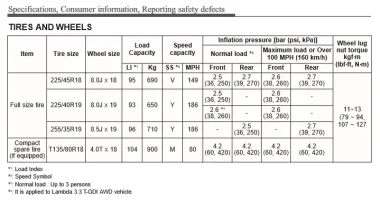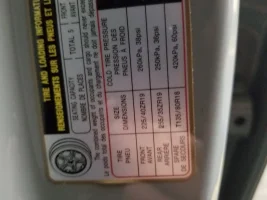This isn't my first car with different recommended pressures front and back. But I can note that the word used is "recommended". In autocross, there's a common practice of marking your tires' sidewalls with a "crayon" of sorts so that when you come off the course you can see how much your tires are rolling over. Once a tire rolls over far enough to pass the edge of the tread, you know it's underinflated for your use - time to add some air.
Also, an overinflated tire mostly has the center of it's tread wearing on the road as the tire is more rounded. An underinflated tire will show more wear on the edges as the center of the tread can deflect away from the road - inside the tire, more or less. When someone inspects a tire for wear, these are the things that can be seen. Someone's (hopefully) done enough studying of the tires' performance with whatever they consider "normal" use and come up with these pressures.
In the case of 18" vs. 19", they are completely different tires. So I don't find it surprising at all that the recommendations are different. I'd be surprised if they weren't!
Similarly, using different tires, or even different dimensions (ratio, tread width) of the same tire will very likely require different numbers.
This is why it's a good practice to check your tires when they're rotated so that you can see if you're habitually under- or over-inflating any tires based on your own tire/wheel setup and driving style.







